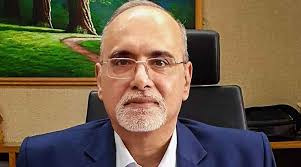![]() By: Shree1news, 06 NOV 2020
By: Shree1news, 06 NOV 2020
Newly-appointed deputy governor M Rajeshwar Rao mentioned on Friday larger non-banking finance companies (NBFC) needs to be regulated as strictly as banks so as to protect monetary stability, on the similar time letting the opposite NBFCs benefit from the light-touch regulation for the sector.
The sector can expect to witness a graded regulatory framework for NBFCs “calibrated in relation to their contribution to systemic significance.” This may include having a relook on the regulation of microfinance institutions, and curtailing the regulatory arbitrage enjoyed by certain NBFCs that are neither too big to cause systemic instability, nor small enough to be ignored.
“NBFCs with vital externalities and which contribute considerably to systemic dangers have to be recognized and subjected to the next diploma of regulation. One can even argue that the design of prudential regulatory framework for such NBFCs might be comparable with banks in order that past a degree of criticality to systemic dangers, such NBFC ought to have incentives both to transform right into a commercial bank or scale down their community externalities inside the monetary system,” Rao said at a summit on NBFCs organised by Assocham.
This association, the deputy governor mentioned, would make the monetary sector “sound and resilient whereas permitting a majority of NBFCs to proceed underneath the regulation-light construction.”
Rao additionally proposed to eradicate regulatory arbitrage loved by sure NBFCs which might be slowly increase systemic threat by doing so. These NBFCs are neither crucial when it comes to systemic threat, nor are they too small of their scale and complexity. “These NBFCs at the moment get pleasure from nice diploma of regulatory arbitrage vis-à-vis banks. As a gaggle, these entities can contribute to build-up of systemic dangers due to the regulatory arbitrage loved by them; therefore there’s a have to recalibrate the laws,” the deputy governor mentioned.
The deputy governor wished to carry stricter regulation on the microfinance sector. Whereas a number of large MFIs have converted into Small Finance Banks, the share of of NBFC-MFIs in the overall microfinance sector has come down to a little over 30 per cent, he said.
“Today we’re in a situation, where the regulatory rigour is applicable only to a small part of the microfinance sector. There is a need to re-prioritise the regulatory tools in the microfinance sector so that our regulations are activity-based rather than entity-based. After all, the core of microfinance regulation lies in customer/shopper safety,” Rao said in his speech.
The dynamic nature of the fintech sector continues to pose regulatory challenges. “While making regulation for the future in the FinTech area, orderly growth and buyer safety and data safety will stay the guiding principles for the RBI,” Rao said.
The deputy governor noted that the NBFC sector has turn out to be “extraordinarily numerous,” and that the enterprise mannequin, buyer profile and nature of monetary merchandise fluctuate considerably relying on the class of the NBFC.
“The uniqueness of this sector lies in the inherent diversity of activities carried out by different NBFCs and thus, there can be no ‘one-size-fits-all’ prescription in the regulatory approach for NBFCs,” Rao said, advocating a more “calibrated and graded regulatory framework, proportionate to the systemic significance of entities concerned” as the way forward.
Source: A-N







 Finance
Finance





